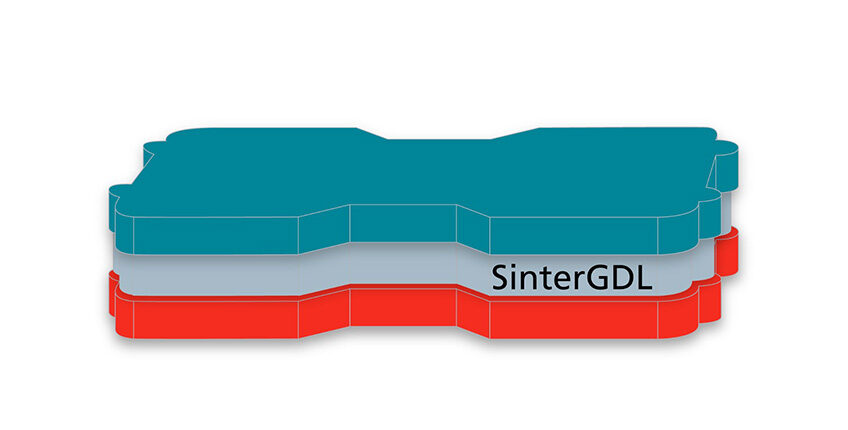In a new project, the Fraunhofer Institute for Manufacturing Technology and Advanced Materials IFAM in Dresden is developing an innovative gas diffusion layer (GDL) for mobile fuel cells, made entirely out of metal.
Together with their partners, Papierfabrik Louisenthal GmbH, balticFuelCells GmbH, FHR Anlagebau GmbH, Papiertechnische Stiftung PTS as well as the German Aerospace Centre (Deutschen Zentrum für Luft- und Raumfahrt e. V.), improvements in the application and assembly features of the GDL are to be achieved as well as in the manufacturability itself.
The SinterGDL project is funded under the National Innovation Programme for Hydrogen and Fuel Cell Technology with a total of 2.82 million euros by the Federal Ministry for Digital and Transport. The funding guideline is coordinated by NOW GmbH and implemented by Project Management Jülich (PtJ).
GDLs are the gas diffusion layers that are placed in the fuel cell stacks between bipolar plates and electrodes. They ensure optimum gas distribution as well as the transporting away of water, heat and electricity.
The fuel cells that are currently used have a variety of potential for improvement: in addition to minimizing the installation space, reducing the manufacturing costs and extending service life are the main priorities. The GDLs of this project are relevant for addressing all three issues.
The aim of the “SinterGDL” project is the development of a new type of PEM stack unit that is both cost-effective and compact. There is a special focus on simple upscaling for mass production of all components.
The key feature is the material used for the GDLs, so-called sintering paper. Using processes that are utilised from paper technology, organic fibres, fillers and additives are processed together with metal powder to form a flat product, very similar to classic paper. The organic components are then removed in a subsequent heat treatment, leaving a purely metallic, porous material.
The main areas of application of the new type of GDLs are mobile fuel cell applications in cars, trucks, buses or trains. Use in shipping is also potentially possible in future. Furthermore, the results can also be adapted to PEM electrolyzer concepts and carried over to stationary applications.


